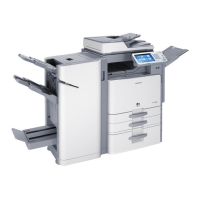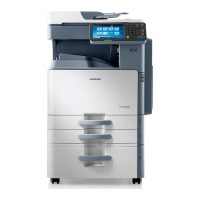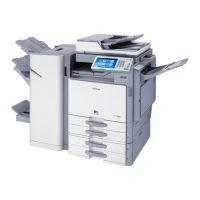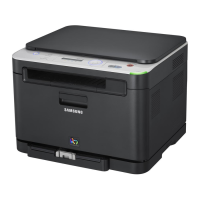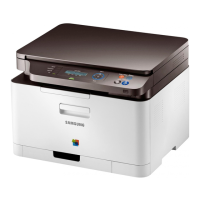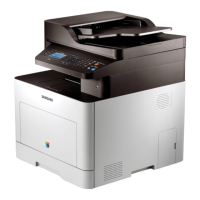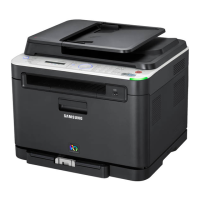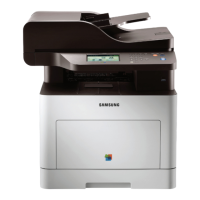Scanning_ 76
5.Scanning
Scanning with your machine lets you turn pictures and text into digital files that can be stored on your computer.
This chapter includes:
• Basic sca
nning method
• Understanding the scan methods
• Scanning originals and sending through email (scan to email)
• Scanning originals and sending via SMB/FTP (Scan to server)
• Scanning originals and sending to a USB memory device (scan to USB)
• Changing the scan feature settings
• Using a programs setting
• Scanning originals and sending to your computer (scan to PC)
• Scanning with TWAIN-enabled software
• MAC scanning
• Linux scanning
The maximum resolution that can be achieved depends upon various
factors, including computer speed, available disk space, memory, the
size of the image being scanned, and bit depth settings. Thus,
depending on your system and what you are scanning, you may not
be able to scan at certain resolutions, especially using enhanced
resolution.
Basic scanning method
You can scan the originals with your machine via the network.
• Easy Printer Manager(EPM): EPM is a Windows-based application
th
at combines Samsung device settings into one location.
• TW
AIN: TWAIN is the one of preset imaging applications. Scanning an
image launches the selected application, enabling you to control the
scanning process. This feature can be used via a network connection
(see "Scanning with TWAIN-enabled software" on page 86).
• Easy Do
cument Creator(EDC): This program is accompanying
software for your machine. You can use this program to scan images or
documents. (see "Understanding Samsung Easy Document Creator" on
page 121).
• Email: You can send the scanned image as an email attachment (see
"Scanning originals and sending through email (scan to email)" on
page 77).
• Server: You can scan an image and send it to a server such as FTP or
SM
B (see "Scanning originals and sending via SMB/FTP (Scan to
server)" on page 78).
• USB: You can scan an image and store it to a
USB memory device (see
"Scanning originals and sending to a USB memory device (scan to
USB)" on page 80).
Understanding the scan methods
To use the scanning feature, press Scan to Email, Scan to USB, Scan to
Server, Scan to PC, or Scan to Shared Folder on the display screen.
If a different screen is displayed, press ( ) to go to the home display
screen.
• Scan to Email: Scans and sends scanned output to the destination by
e-mail (see "Scanning originals and sending through email (scan to
email)" on page 77).
• Sc
an to Server: Scans and sends scanned output to the destination
with SMB or FTP (see "Scanning originals and sending via SMB/FTP
(Scan to server)" on page 78).
• Sc
an to USB: Scans and stores scanned output onto a USB memory
device (see "Scanning originals and sending to a USB memory device
(scan to USB)" on page 80).
If you want to use this feature, you need to insert a USB memory
device into the USB memory port on your machine.
• Scan to PC: Scans and sends scanned output to a computer (see
"Scanning originals and sending to your computer (scan to PC)" on
page 86).
• Sc
an to Shared Folder: Scans and stores scanned output in the
shared folder.

